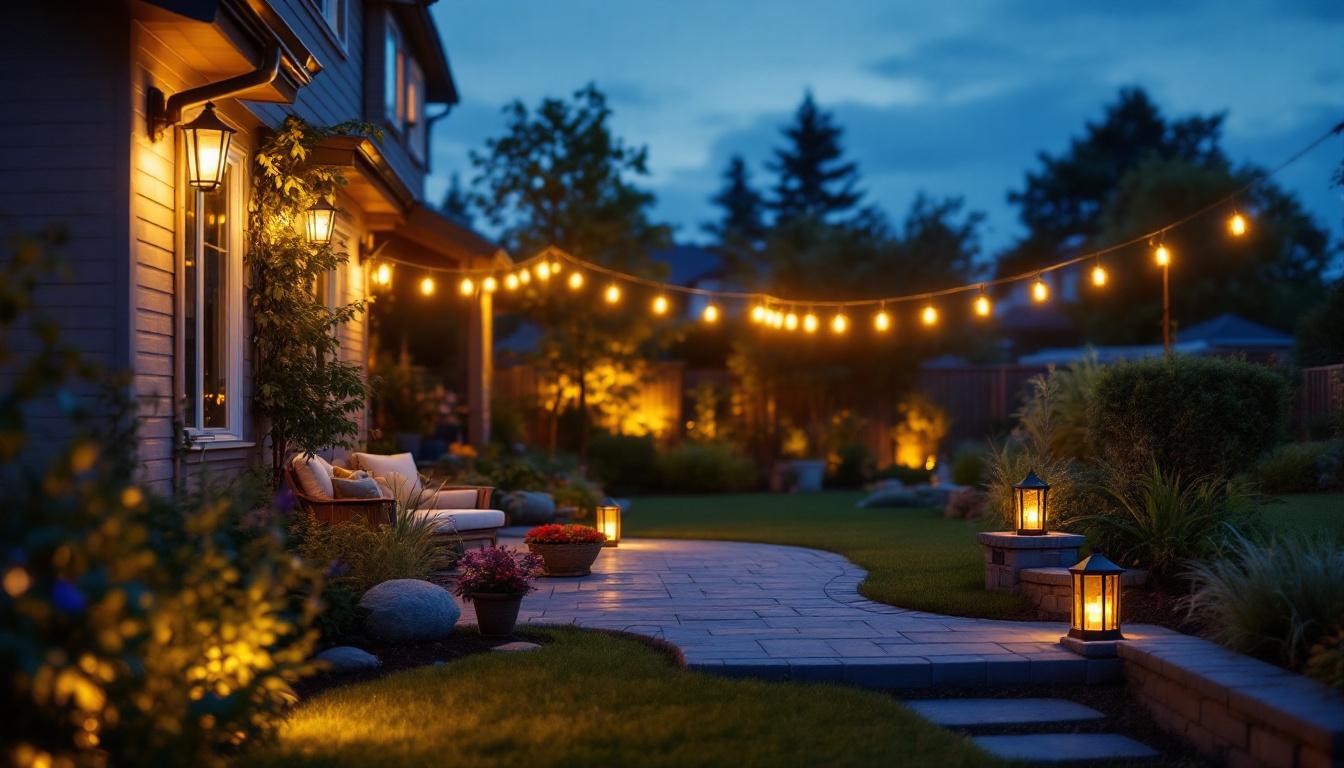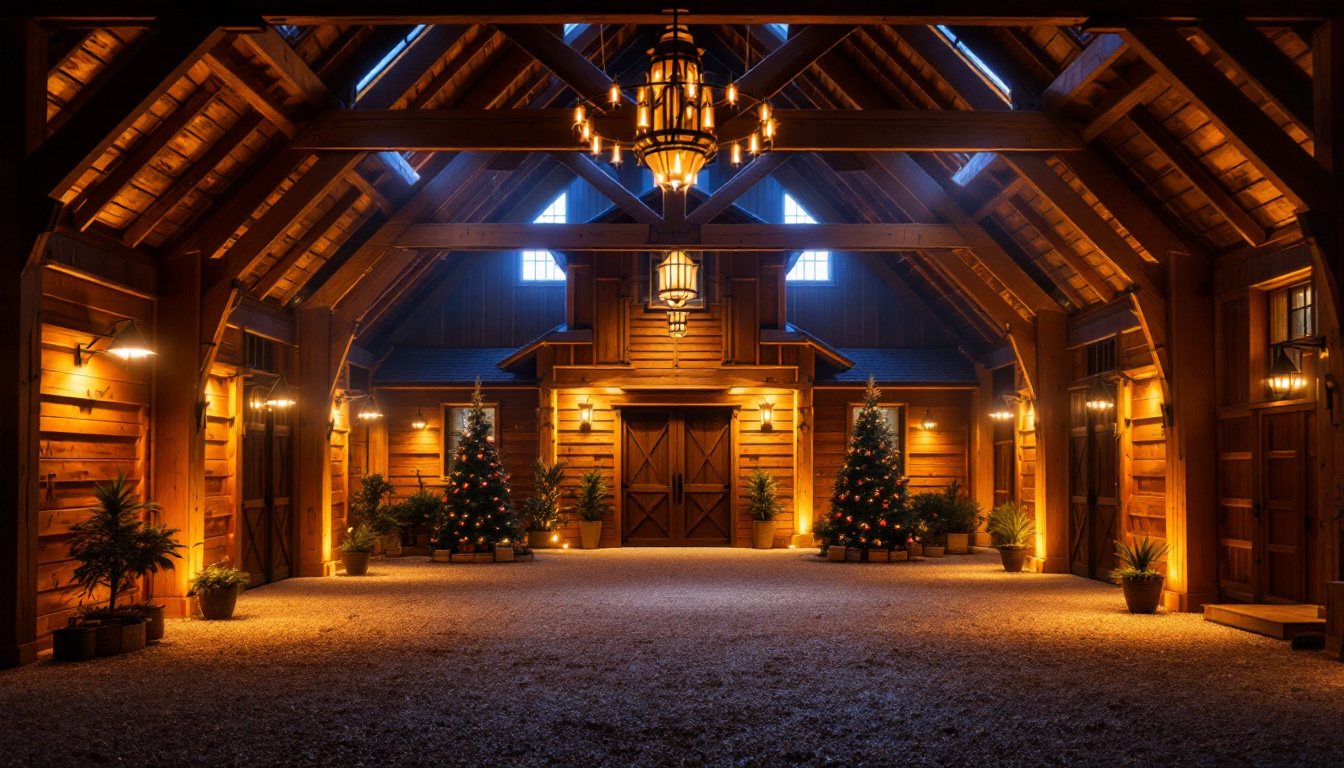
Outdoor lighting plays a crucial role in enhancing the aesthetics, safety, and functionality of residential spaces. For lighting contractors, understanding the various options and techniques available for outdoor backyard lighting is essential. This guide aims to provide insights into the types of outdoor lights, design considerations, installation tips, and maintenance practices that can help contractors deliver exceptional results to their clients.
When it comes to outdoor lighting, there are several types of fixtures that can be utilized to create a beautiful and functional backyard environment. Each type serves a specific purpose and can be combined to achieve a cohesive design.
Pathway and walkway lights are essential for illuminating paths, driveways, and garden trails. These fixtures not only enhance safety by preventing trips and falls but also guide guests through the outdoor space. Available in various styles, from solar-powered models to low-voltage options, they can be strategically placed to highlight landscaping features while ensuring adequate visibility.
Contractors should consider the height and brightness of these lights, as well as their energy efficiency. LED options are particularly popular due to their long lifespan and low energy consumption, making them an excellent choice for environmentally conscious clients. Furthermore, many modern pathway lights come with motion sensors or timers, allowing homeowners to customize their lighting experience based on their needs and preferences. This added functionality not only enhances convenience but also contributes to energy savings, as lights can be programmed to turn off automatically when not in use.
Deck and patio lights are designed to enhance outdoor living areas, allowing homeowners to enjoy their spaces even after sunset. These lights can be installed in various forms, including recessed lighting, post caps, and string lights. Each option offers unique benefits and can be tailored to fit the specific aesthetic of the backyard.
Recessed lighting, for instance, provides a sleek and modern look, while string lights add a whimsical touch. When advising clients, contractors should discuss the intended use of the space and recommend lighting solutions that create the desired ambiance. Additionally, incorporating dimmable options can allow for versatile lighting scenarios, from bright illumination for gatherings to softer, more intimate lighting for romantic evenings. The choice of color temperature can also play a significant role in setting the mood; warmer tones often create a cozy atmosphere, while cooler tones can lend a more contemporary feel.
Accent lighting is used to highlight specific features in a backyard, such as trees, sculptures, or architectural elements. Spotlights and floodlights can be strategically placed to create dramatic effects and draw attention to focal points. This type of lighting not only enhances the beauty of the landscape but also adds depth and dimension to the overall design.
When installing accent lights, contractors should consider the angle and intensity of the light to avoid harsh shadows and ensure a soft, inviting glow. Additionally, using dimmable options can provide flexibility in adjusting the mood for different occasions. Beyond just aesthetics, accent lighting can also serve practical purposes, such as illuminating outdoor art installations or water features, making them visible and enjoyable at night. Furthermore, integrating smart lighting technology can allow homeowners to control their accent lights remotely, enabling them to create dynamic displays that can change with the seasons or special events, enhancing the overall outdoor experience.
Effective outdoor lighting design requires careful planning and consideration of various factors. By taking the time to understand the client’s preferences and the unique characteristics of the space, contractors can create a lighting scheme that is both functional and visually appealing.
Before selecting lighting fixtures, it is essential to assess the outdoor space thoroughly. Factors such as the size of the backyard, existing landscaping, and architectural features will influence the lighting design. A well-planned layout can enhance the beauty of the space while ensuring safety and usability.
Contractors should also consider the intended use of different areas within the backyard. For example, a dining area may require brighter lighting for meals, while a lounging space might benefit from softer, ambient lighting. Understanding these nuances can help in creating a more personalized lighting experience. Additionally, seasonal changes can affect how the space is utilized; for instance, a fire pit area may be more popular in the fall, necessitating warmer lighting to create a cozy atmosphere. By anticipating these shifts, contractors can design a lighting plan that remains functional and attractive throughout the year.
The selection of fixtures is critical to achieving the desired aesthetic and functionality. Contractors should present clients with a range of options that suit their style preferences, from modern and sleek to rustic and traditional. Additionally, it’s important to consider the materials and finishes of the fixtures, as these elements can significantly impact the overall look.
Moreover, energy efficiency is a growing concern among homeowners. Recommending LED fixtures not only aligns with sustainability goals but also reduces long-term energy costs. Clients will appreciate the balance of beauty and practicality in their outdoor lighting choices. Furthermore, incorporating smart lighting technology can elevate the outdoor experience; homeowners can control brightness and color temperature via smartphone apps, allowing for customizable settings that adapt to different occasions, whether it’s a lively gathering or a quiet evening under the stars.
A successful outdoor lighting design incorporates multiple layers of light to create depth and interest. This can be achieved through a combination of ambient, task, and accent lighting. Ambient lighting provides overall illumination, while task lighting focuses on specific areas, and accent lighting highlights features.
By layering these different types of lighting, contractors can create a dynamic and inviting atmosphere. For instance, using a combination of pathway lights, recessed deck lights, and spotlights on trees can transform an ordinary backyard into a stunning outdoor retreat. Additionally, integrating decorative elements like lanterns or string lights can add a whimsical touch, enhancing the overall ambiance. These features not only serve a practical purpose but also contribute to the aesthetic charm of the outdoor space, making it a perfect setting for entertaining guests or enjoying quiet moments alone. The interplay of light and shadow created by these layers can also emphasize the textures of the landscaping, bringing the garden to life even after sunset.
Proper installation is key to ensuring that outdoor lighting systems function effectively and safely. Here are some essential tips for contractors to consider during the installation process.
Before beginning the installation, it is crucial to plan the layout of the lighting fixtures. This involves marking the locations of each light and considering factors such as spacing, height, and angle. A well-thought-out layout not only enhances the aesthetics but also maximizes the functionality of the lighting.
Contractors should also take into account the existing electrical infrastructure. If the project requires new wiring, it is essential to follow local codes and regulations to ensure safety and compliance. Additionally, considering the accessibility of fixtures for future maintenance can save time and effort down the line.
Having the right tools on hand is essential for a smooth installation process. Contractors should be equipped with tools such as wire strippers, voltage testers, and appropriate fasteners. Using quality materials and tools not only ensures a professional finish but also enhances the longevity of the lighting system.
Furthermore, it’s important to educate clients on the proper use of outdoor lighting systems. Providing them with information on timers, dimmers, and smart controls can enhance their experience and satisfaction with the installed system.
Once the installation is complete, testing the lighting system is essential. This step allows contractors to ensure that all fixtures are functioning correctly and that the desired effects are achieved. Adjustments may be necessary to optimize the lighting angles and brightness levels.
Encouraging clients to view the lighting at different times of day can also help in making final adjustments. This collaborative approach not only enhances client satisfaction but also reinforces the contractor’s commitment to delivering quality work.
Regular maintenance is vital for ensuring the longevity and performance of outdoor lighting systems. Contractors should offer clients guidance on how to care for their lighting fixtures to keep them looking and functioning their best.
Outdoor lighting fixtures are exposed to various environmental elements, which can lead to dirt and debris buildup. Regular cleaning is essential to maintain brightness and prevent corrosion. Contractors should recommend specific cleaning methods based on the materials of the fixtures, whether they are metal, plastic, or glass.
In addition to cleaning, checking for any signs of wear and tear is crucial. Clients should be advised to inspect their lighting systems periodically for any damaged wires, burnt-out bulbs, or loose connections. Addressing these issues promptly can prevent more significant problems in the future.
Seasonal changes can impact outdoor lighting systems, especially in regions with harsh weather conditions. Contractors should educate clients on the importance of preparing their lighting for winter, such as removing snow and ice from fixtures and ensuring that connections are protected from moisture.
During the fall, it may be necessary to trim back vegetation that could obstruct light fixtures. By providing seasonal maintenance tips, contractors can help clients keep their outdoor spaces beautiful and functional year-round.
Outdoor backyard lighting is an essential aspect of landscape design that enhances both the beauty and functionality of outdoor spaces. For lighting contractors, understanding the various types of fixtures, design considerations, installation techniques, and maintenance practices is crucial for delivering high-quality results to clients.
By staying informed about the latest trends and technologies in outdoor lighting, contractors can provide valuable insights and recommendations that meet the evolving needs of homeowners. Ultimately, a well-executed outdoor lighting design not only elevates the aesthetics of a property but also creates inviting and safe environments for families and guests to enjoy.
Ready to take your outdoor lighting projects to the next level? At LumenWholesale, we provide lighting contractors with an exceptional range of high-quality, spec-grade lighting products at prices that can’t be beaten. Say goodbye to local distributor markups and hello to superior lighting solutions that meet the highest industry standards. With our hassle-free bulk buying and free shipping, you can equip your outdoor backyard lighting designs with premium fixtures while enjoying the best value. Elevate your lighting game and create stunning, safe, and functional outdoor spaces with the help of LumenWholesale – Wholesale Lighting at the Best Value.

Discover how light fixtures for drop ceilings can transform your lighting installation projects.

Explore how LED barn lights are revolutionizing modern lighting solutions with their energy efficiency, durability, and versatile design.

Discover the top solar-powered outdoor flood lights that are revolutionizing efficiency for lighting contractors.

Discover how the T5 Ballast 2 Lamp is transforming lighting projects with real-world success stories from top contractors.